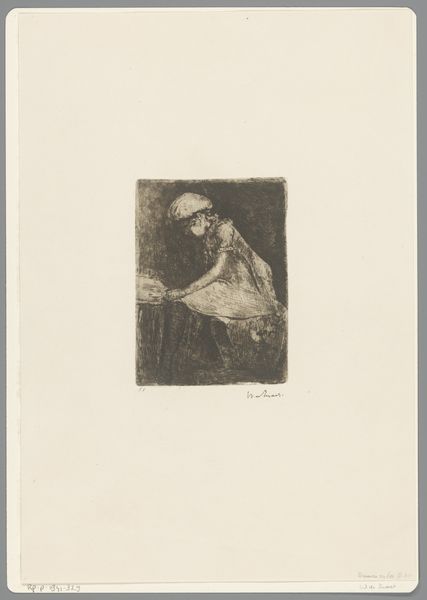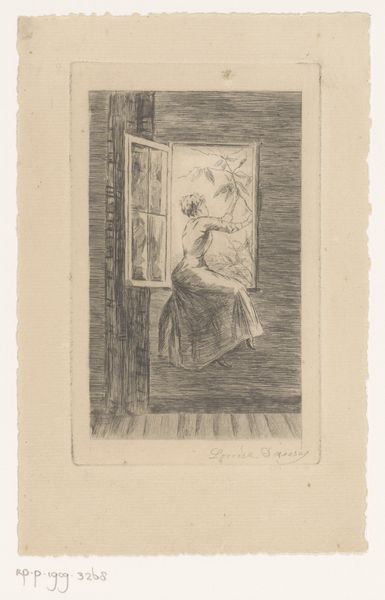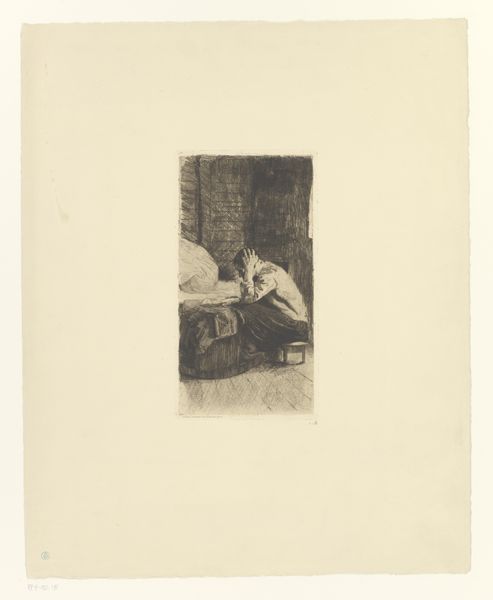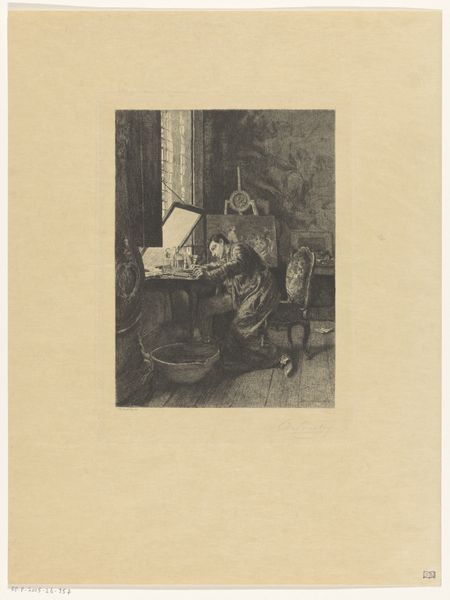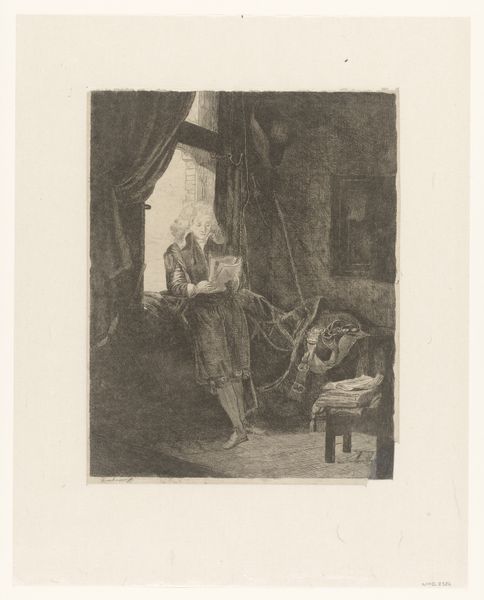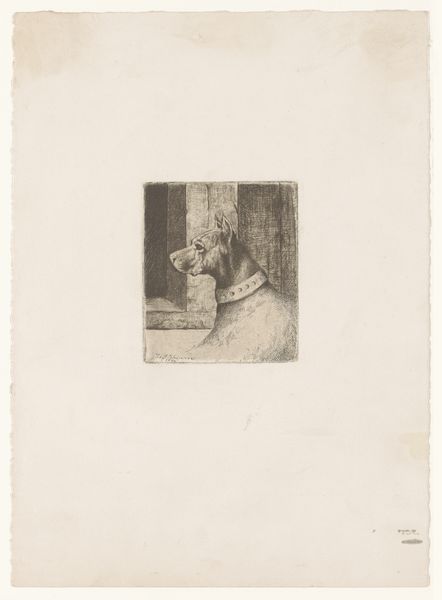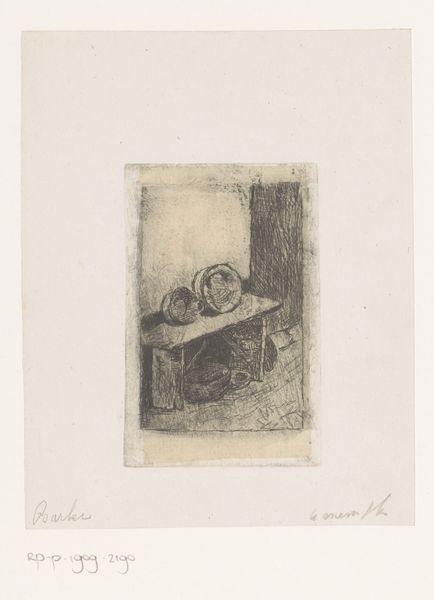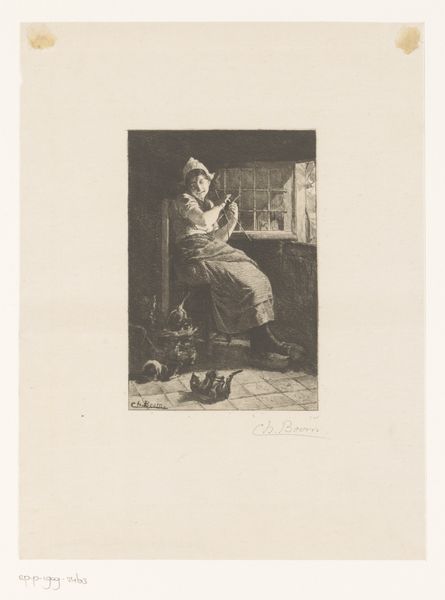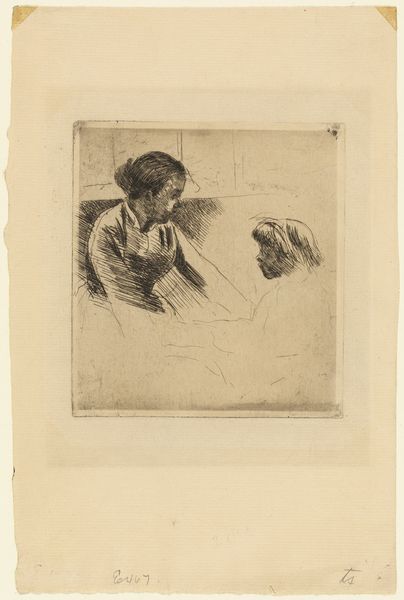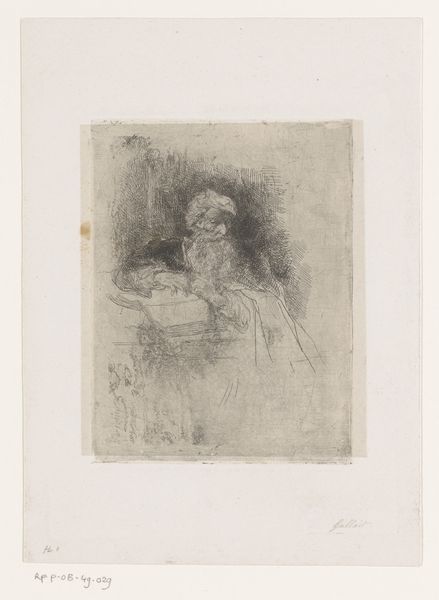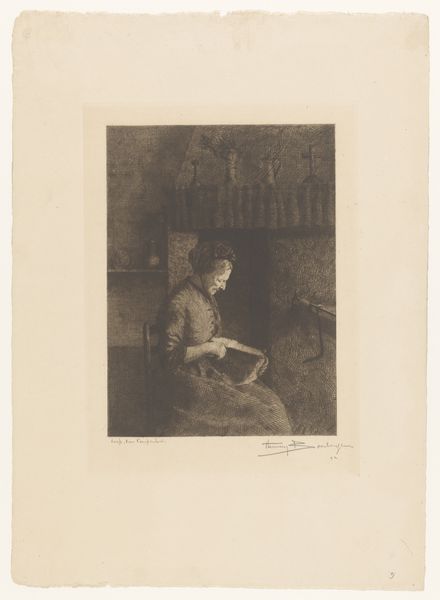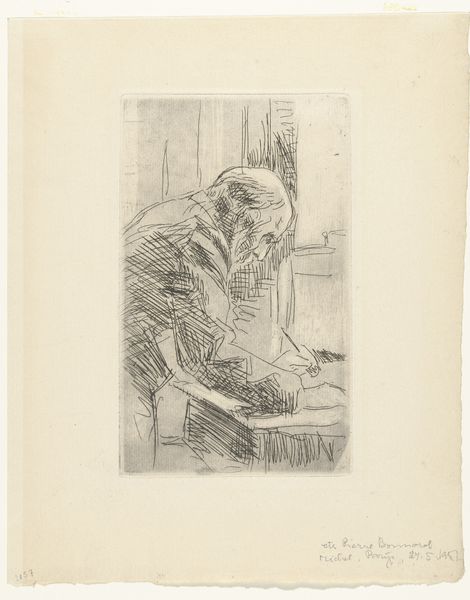
Dimensions: height 161 mm, width 150 mm
Copyright: Rijks Museum: Open Domain
Jules de Goncourt made this print called "Aap met spiegel" – translated as "Monkey with Mirror" – using etching techniques. In this image, we see an ape dressed in human clothing, gazing into a mirror. In the 19th century, monkeys in art often served as stand-ins for human behaviour, offering commentary on society through satire. The tradition of the 'singerie' - or monkey trick - was well established in European art since the Middle Ages. Consider the context in which Goncourt produced this image. The 19th century saw rapid social changes, industrialisation, and evolving class structures. Art became a powerful tool for social commentary. Institutions like the press and the art market played a crucial role in shaping public opinion and taste. Prints such as this one would have been widely circulated, prompting viewers to reflect on their own place in society. To understand it better, we can delve into the illustrated press of the time and learn more about the institutions that exhibited it. These kinds of historical resources help us better appreciate art's meaning, and its dependence on a specific social and institutional context.
Comments
No comments
Be the first to comment and join the conversation on the ultimate creative platform.

